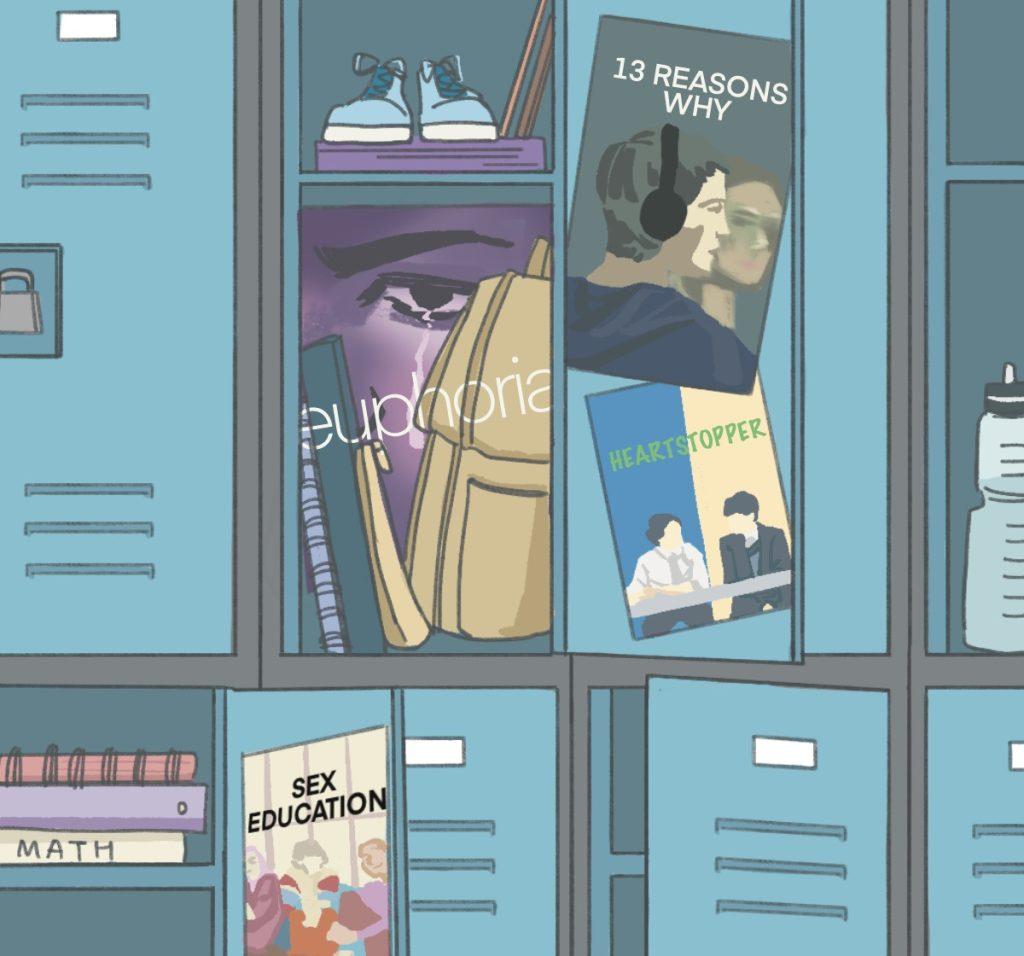
Transparency Item: The Perspectives section of the Graphic is comprised of articles based on opinion. This is the opinion and perspective of the writer.
American film and television, especially that which is geared at young people, works its way into everyday discussion at a remarkable pace. Phrases like “XOXO Gossip Girl” and the “thirteenth reason” are memes and colloquialisms that many people understand instantly, even if they have never seen the shows being referenced.
When the second season of “Euphoria” came out, I was able to piece together much of what had happened just based on discourse I overheard. I have never seen “Pretty Little Liars,” but I do know exactly who “A” is.
Last year, I finally got around to watching the first season of “Euphoria.” Like many of its viewers, I was entertained by it while I was questioning its representation of modern teenagers, and I don’t think that conflicted experience is unique to this show.
“Euphoria” is not unlike the decades’ worth of movies and TV shows that revolve around high school students, many of which are the successors of the work of directors like John Hughes. These pieces of work attempt to examine what it means to be an adolescent in the current moment, and may successfully or unsuccessfully pin down a common experience.
There are several defining quirks of these shows and films. In many cult and modern classics, high school is merely the backdrop for interpersonal dramas and acts more like a prop than a relevant element of the characters’ lives.
The subjects of these stories are almost invariably beautiful according to social standards, as well as impeccably styled. In shows like “Gossip Girl,” teenagers from wealthy or relatively wealthy backgrounds are centered.
In a subsection of the coming-of-age genre, the characters do not have what I would call common problems. In “The Kissing Booth 2,” characters who have never opened a textbook, as far as the audience knows, are admitted into Ivy League universities without much fanfare.
Many students find college applications to be a significant element of their lives, and as a plot point, it opens up potential discussions of wealth, adulthood and academic stress. Yet most movies with Harvard-bound protagonists neglect to even touch on these subjects, often using the acceptance letter as fuel for overblown drama.
On the other hand, characters who do face serious challenges are often cast in a light that highlights some level of romantic appeal. “Euphoria” itself is a very resonant portrayal of mental illness, but it has also been criticized for over-sexualizing its emotionally haunted, battered-down teenage girls.
I don’t mean to suggest that media for teenagers should always represent their experiences as strictly as possible. However, the coming-of-age genre could benefit from a greater variety of stories and styles, as well as a healthy dose of realism.
The movies and shows I have referenced are overwhelmingly centered on an idealized picture of the teenage experience, even when that experience is very difficult. The subliminal messages might imply that a person is only worth seeing if they are some combination of conventionally beautiful, especially privileged or deeply troubled.
I also think that even if media is geared toward young people, it should be created with as much intention and sincerity as that which is made for adults. A young audience is not always an easily won audience, and writers should make an effort to represent and understand a variety of their experiences.
I think that body image and self-esteem can be positively or negatively impacted by what tends to appear on the screen. The importance of shows like “Heartstopper,” “On My Block” and “Sex Education,” which center experiences that are often neglected in popular content, cannot be overstated.
In stories about young people, the characters usually grapple in some form with leaving childhood and becoming a more independent, but nonetheless flawed, version of themselves. These stories can be a great comfort for audiences experiencing the same thing.
It is not bad to have fantastical elements in entertainment; however, good stories tend to come from a place of emotional authenticity, which I think is hindered by the massive effort to create a romanticized version of youth. As the coming-of-age genre continues to change over decades, I hope it will continue to examine the familiar themes from new angles.
___________________
Follow the Graphic on X: @PeppGraphic
Contact Alyssa Johnson via email: alyssa.johnson@pepperdine.edu
